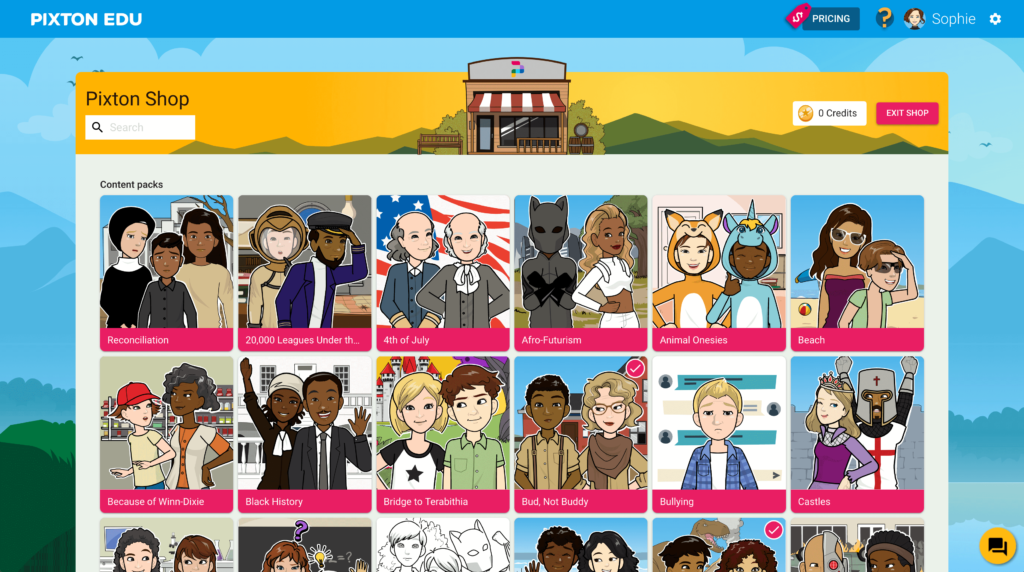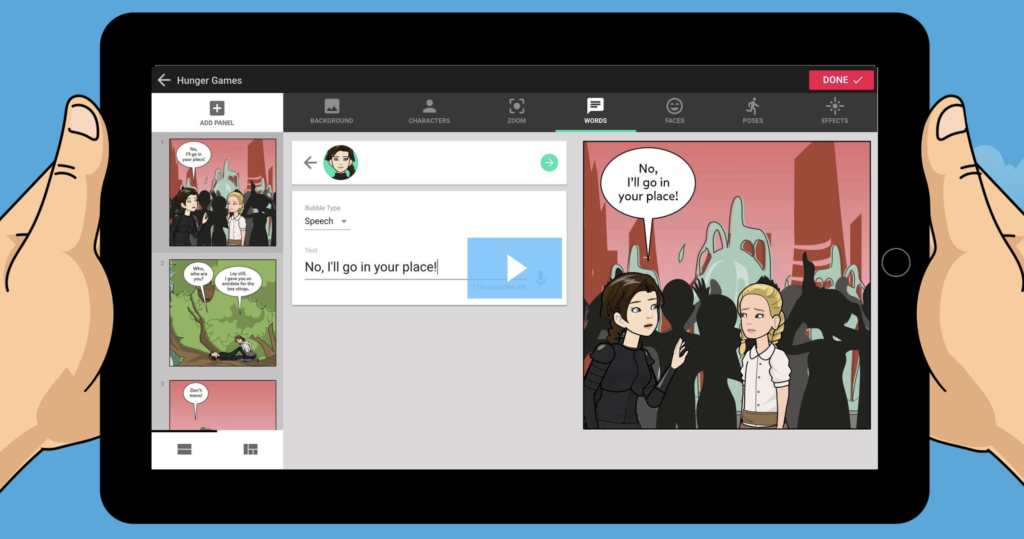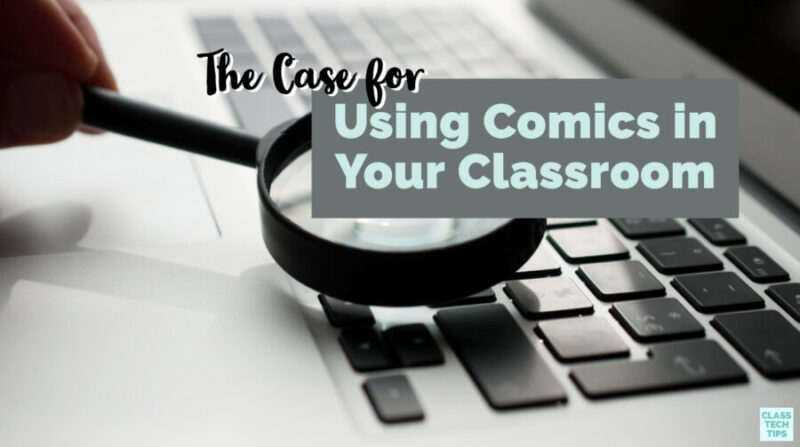As a teacher, one of the best parts of using technology in my classroom was giving students more ways to demonstrate their learning. Students can share the story of their learning with comics in lots of ways. Elementary school-aged students might use comics within a narrative writing unit or high school students learning about the American Revolution. The possibilities are endless!
Earlier this year the team at Pixton EDU reached out to share their comic maker for kids. I thought it was the perfect opportunity to “make a case” for using comics in your classroom this school year. Pixton EDU is a comic creation tool for students in upper elementary through high school. There are lots of ways for students to customize their creations and plenty of resources to help you bring content to life this school year.

Regular followers of the blog have heard me use the phrase tasks before apps before. When students use an open-ended creation tool like Pixton EDU, you can design a task that gives them the space to create something special. In this blog post, I share three reasons that comics hold a special place in my heart. Students can create comics in any subject area when the task is purposeful… and when you have a great tool in your toolkit!

Comics in Your Classroom
From plays to poems, there are plenty of alternatives to traditional essays or reports. When you introduce comics to students, you might share the rich history of this form of storytelling or simply share a few examples that will resonate with your group. As you make a case for comics this school year, here are three things to consider.
Encourage Writers
Comics can encourage writers who might struggle in formats traditionally found in classrooms. If you have a student who is having a hard time telling a story in sequence, describing the setting, or using dialogue, a comic is a fantastic vehicle for exploring these elements. You might have students create a comic book instead of (or before) a more traditional piece of narrative writing. This strategy can help them narrow down on a particular area of storytelling students have found challenging in the past.
Promote Creativity
With comics, students have the option to make creative choices that connect to your learning goals. For example, if students research to learn about the life of a historical figure, they can create a comic that shares a critical moment from their life. This isn’t a fluffy project either. Students will have to understand the who, what, when, and where in order to make a strong comic. The why and how can come through in their presentation of their creation as they share what they’ve made.

Publish Publicly
Students can share the comics they create in lots of ways. Maybe they post them in Google Classroom for their classmates to see. Or perhaps they share what they’ve made in a more public format. For example, you might have students create comics that act as public service announcements for a new recycling initiative in your community. Students can share what they’ve created with local representatives during a school visit or field trip, or post them on a community-facing website.
Create Comics with Pixton EDU
If you’re looking for a tool to put these ideas into actions, check out Pixton EDU. You can sign up for free and access lots of activities. Pixton EDU even has content packs like this one useful for comics related to literature about dystopian worlds. There are no advertisements, and you’ll find Common-Core aligned activities along with plenty of extras.
Comics Across the Content Areas
Creating comics with a tool like Pixton EDU isn’t limited to the English Language Arts classroom. This open-ended creation tool is a great option for helping students share what they have learned in a variety of subject areas. Here are examples that include links to Pixton EDU’s content packs:
- In the science classroom, you might have students create comics to share what they’ve learned after researching different planets. This content pack on the solar system includes lots of options for student creations.
- If your students are exploring everyday applications for math concepts, you’ll want to share this content pack. It has plenty for students to choose from as they create comics showing math concepts in action.
- Regular followers of the blog know that I used to teach in a magnet school with an environmental stewardship theme. This content pack from Pixton EDU will help students create comics related to environmental topics.
- Whether you’re studying American holidays or simply looking for a way for students to chronicle what they’ve learned about the American Revolution, this content pack for the Fourth of July has you covered.

Teachers can sign in with a Google or Microsoft account and create a class. Once you’re logged in, you can share the special link for your class with students. There are all sorts of options for students, and the video above gives you a sense of everything you can do within Pixton EDU. Students will find lots of options for settings and characters, and teachers will find plenty of resources to get started with this comic creation tool.
Head over to Pixton EDU’s website to get started for free!







